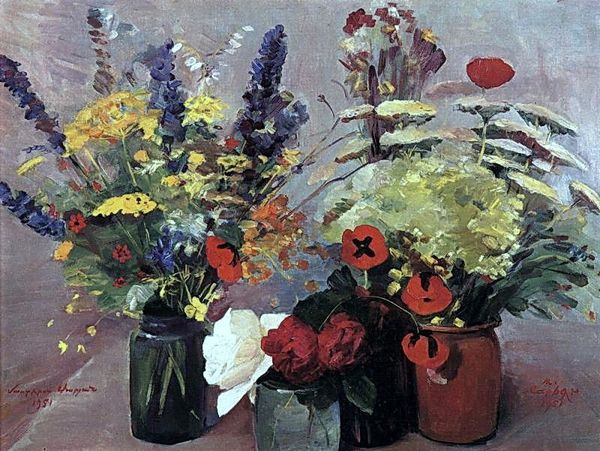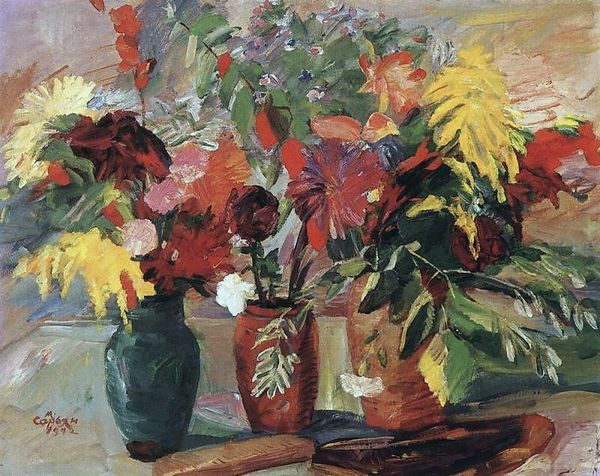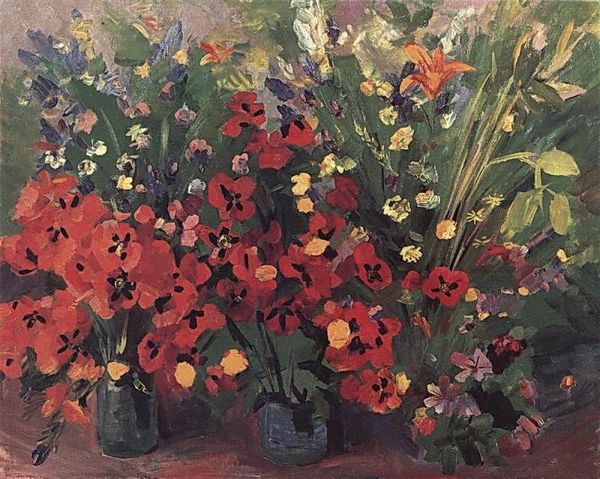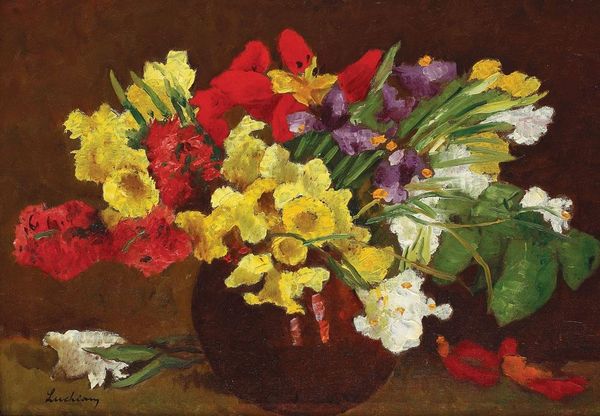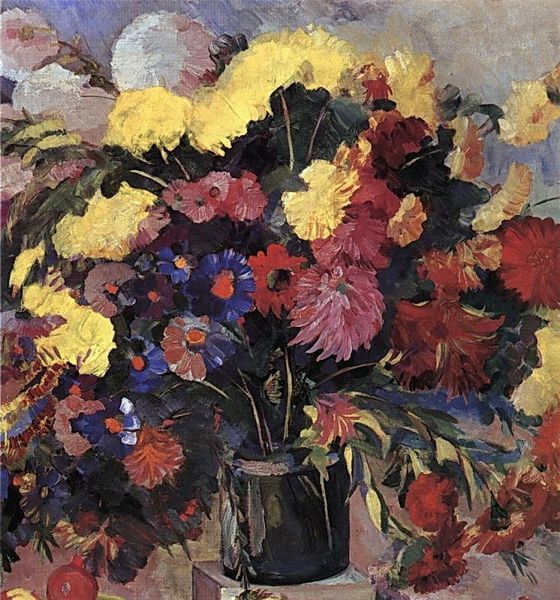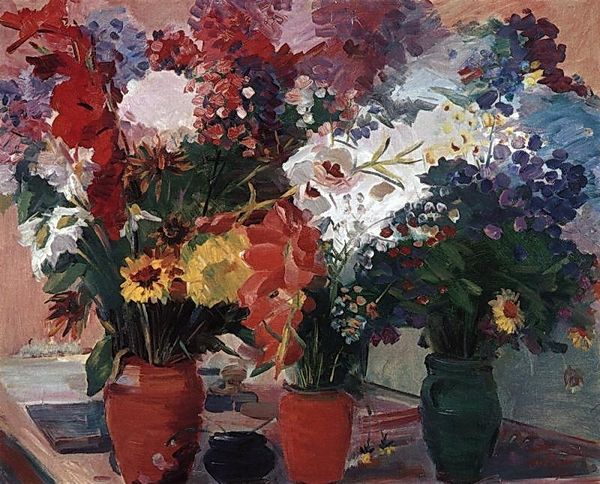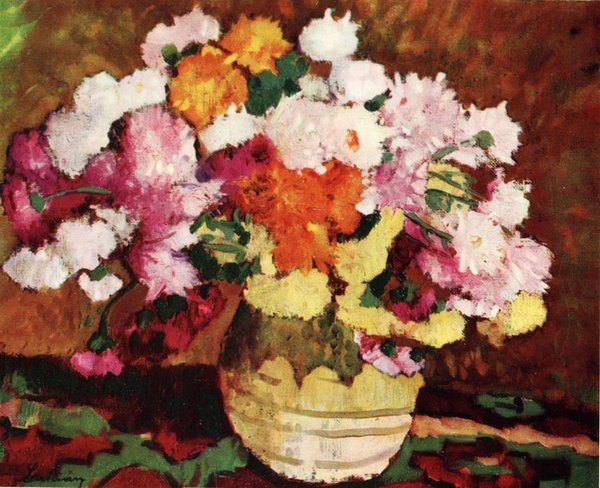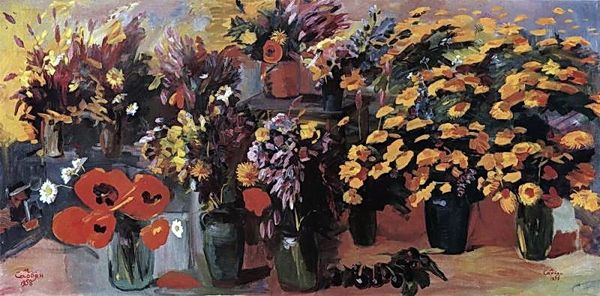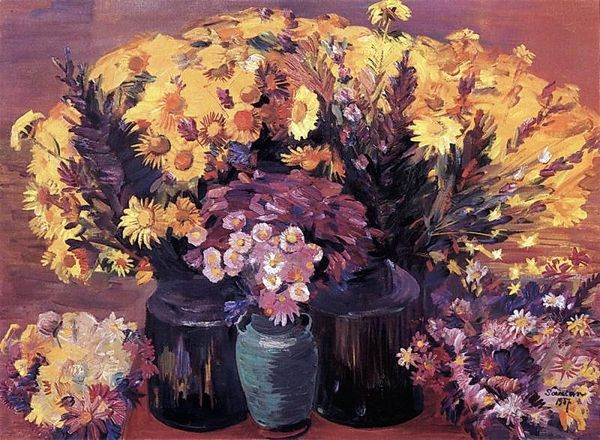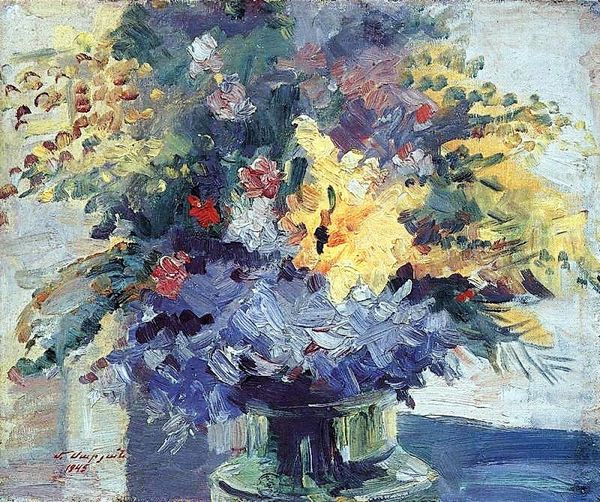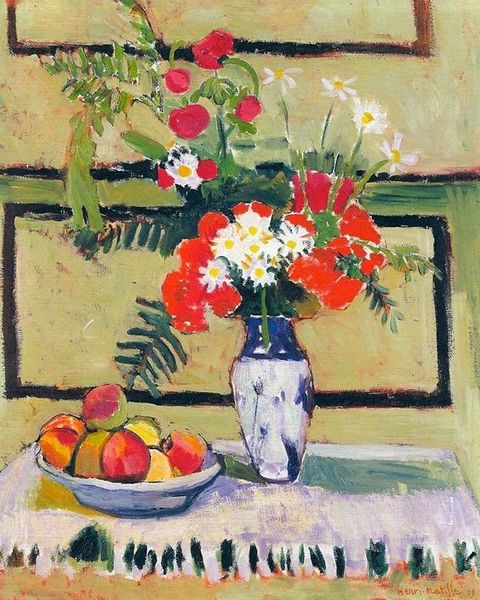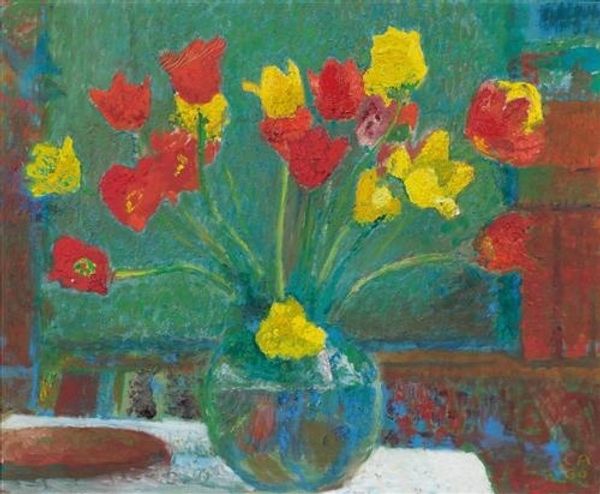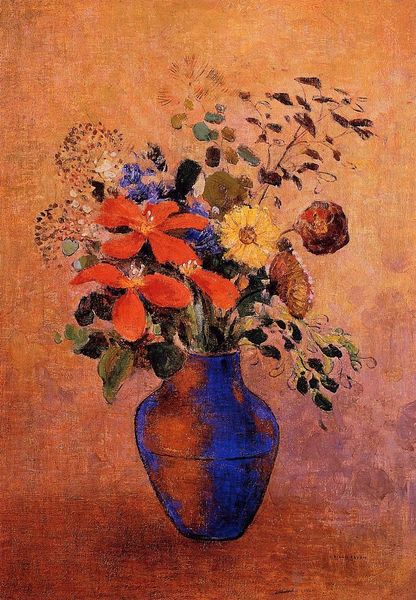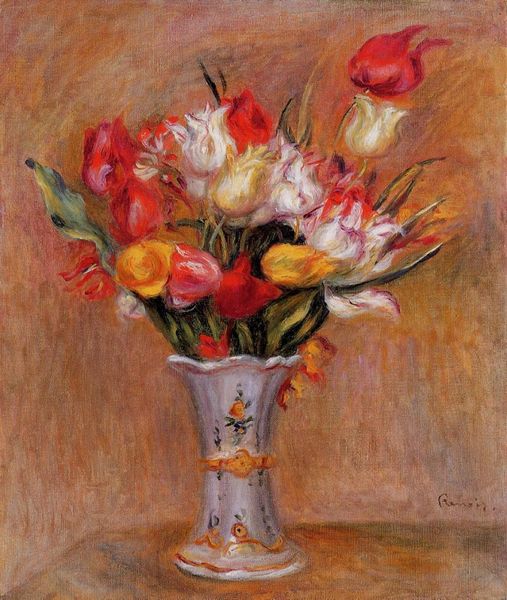
Copyright: Martiros Sarian,Fair Use
Curator: Looking at Martiros Sarian’s oil painting, “Flowers,” created in 1941, what immediately strikes you? Editor: A joyful abundance! The arrangement—or rather arrangements—feels so full of life. It’s as if a summer meadow has been brought indoors, albeit a slightly unsettling one with that high-key color. Curator: The chromatic intensity is crucial. Observe how Sarian uses color—not just to depict, but to structure the entire composition. Note how the vibrant reds and yellows compete against cool blues and greens. This opposition creates a powerful visual tension. Editor: Absolutely, the social context cannot be dismissed! Considering that this piece was created in 1941, during World War II, such an expressive depiction of flowers would give Armenian audiences great joy and solace as it contrasts the pervasive austerity and distress, serving almost as an act of quiet resistance and affirming life amidst conflict. Curator: And structurally, the arrangement is vital. The multiplicity of vases breaks up the picture plane. Each bouquet could stand alone, yet Sarian presents them together, creating both unity and division. Do the various blooms imply differing themes as if each bunch represented its own perspective, competing to establish its visual presence on the tableau? Editor: Considering how such still life paintings have functioned historically, Sarian is subverting the expected, passive viewing. "Flowers" becomes an invitation into not just enjoying color, but actively embracing resilience. This vivid presentation urges those living within constricted circumstances to participate, engaging with all facets in one’s immediate setting—and also beyond it—rather than isolating from them. Curator: Fascinating points about context and social implications! I lean towards understanding Sarian’s “Flowers” primarily as a formal exercise in the tensions of color and form. The external references add meaning, but the visual language does speak first. Editor: Yes, an utterly beautiful and complex piece, ripe with the nuances of human experience—rendered powerfully. Curator: Precisely! An opportunity to reflect on form and meaning.
Comments
No comments
Be the first to comment and join the conversation on the ultimate creative platform.
